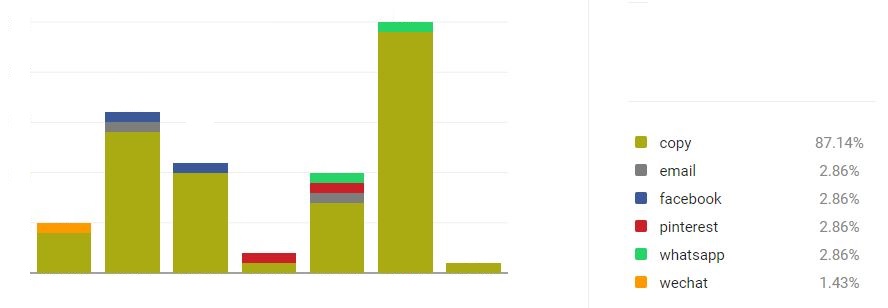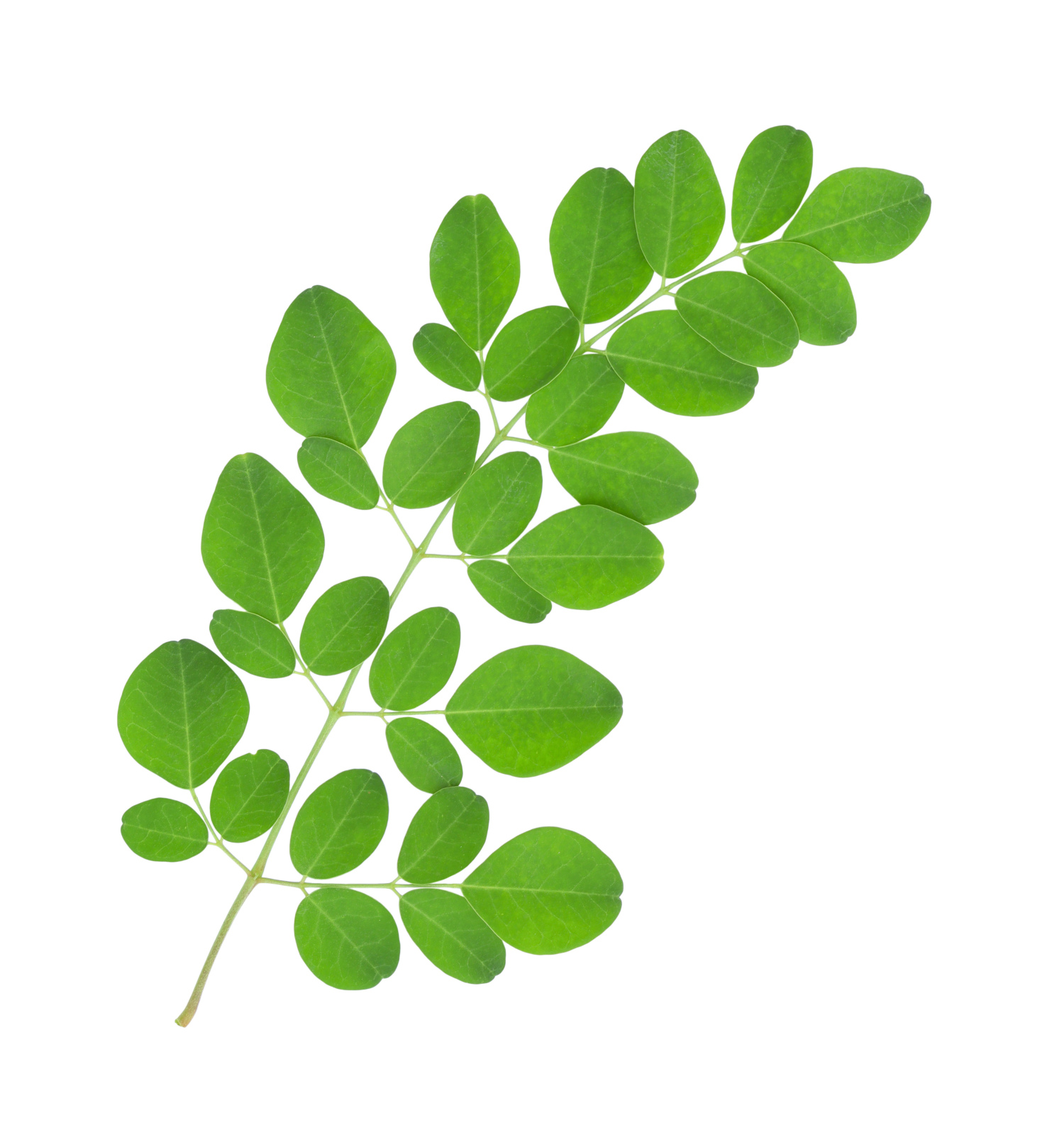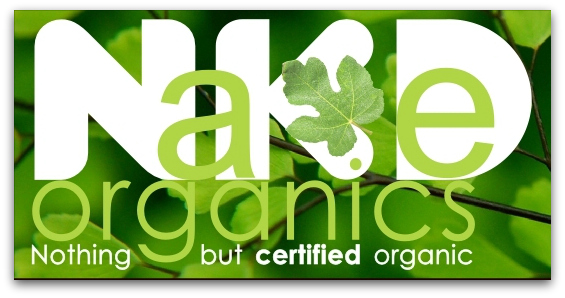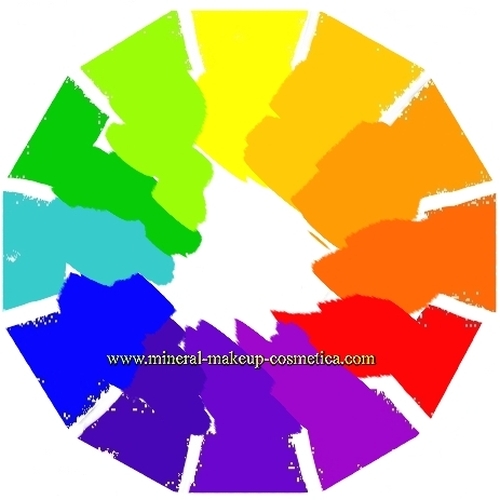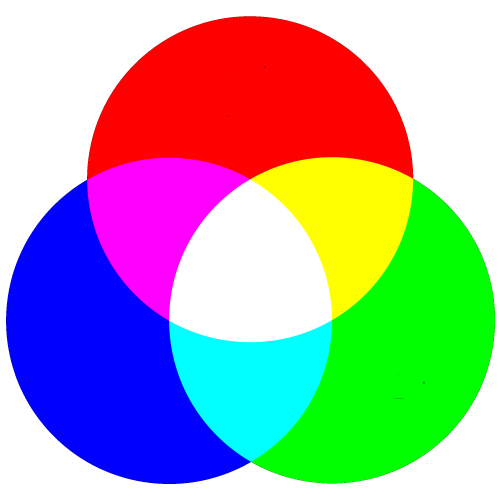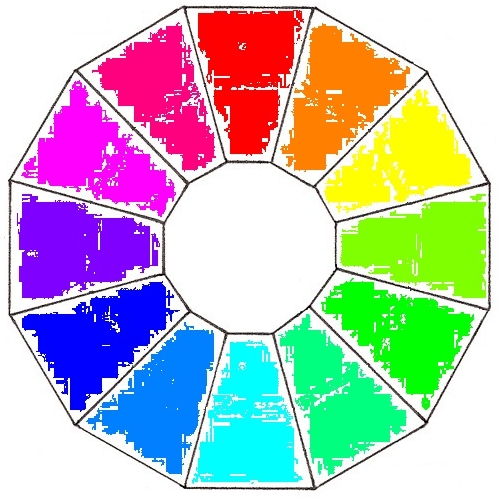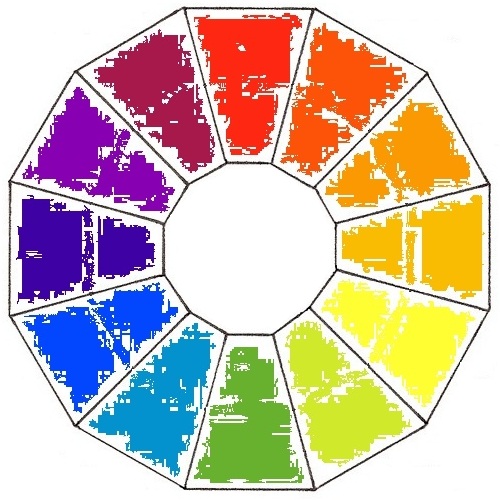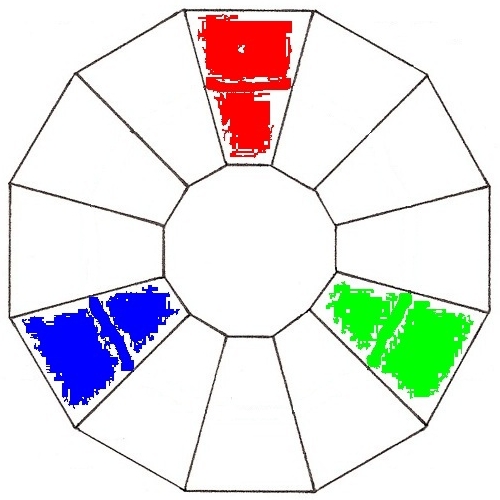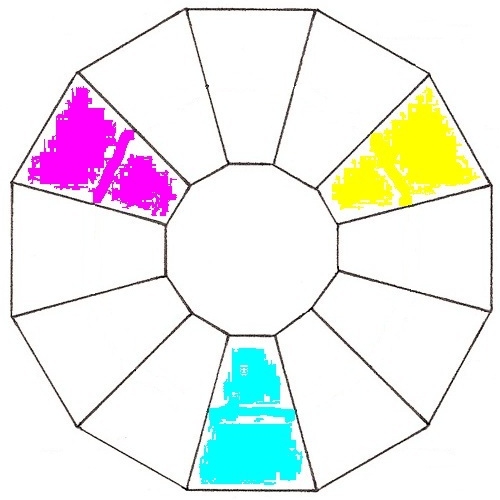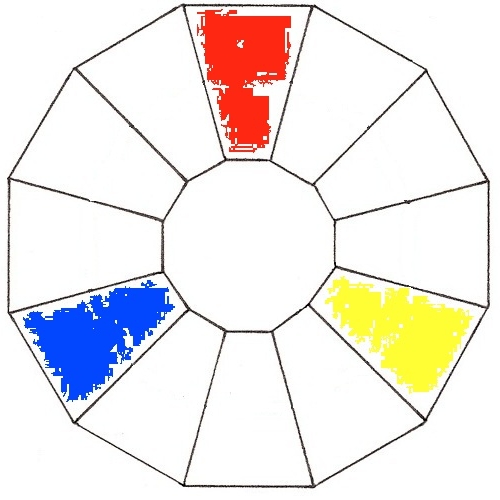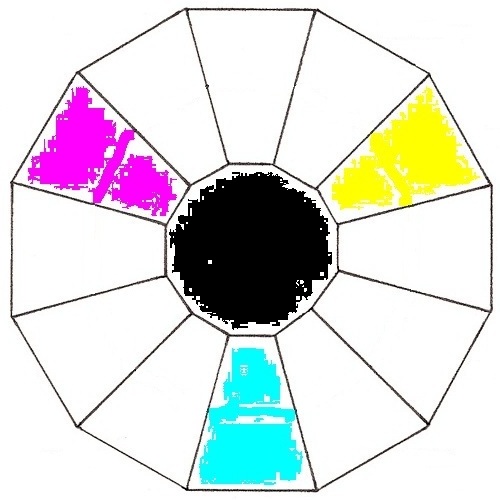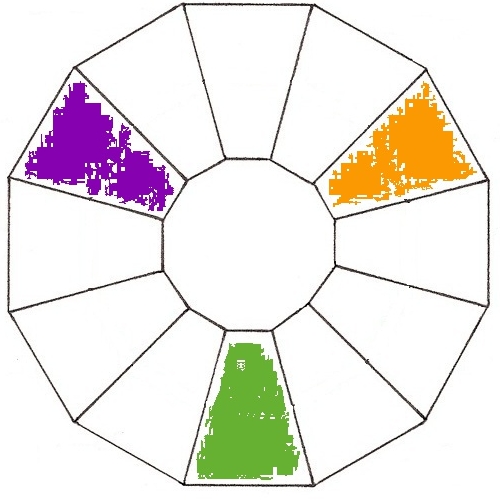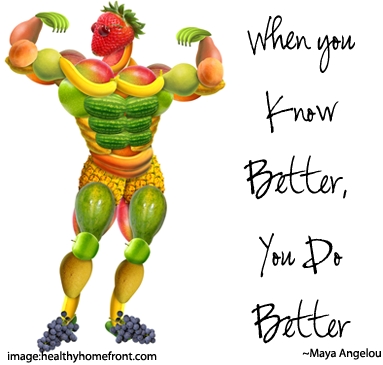|
|
www.moyoway.com |
Buy your Certified Organic |
|
|
CLICK FOR NAKED www.moyoway.com |
Moyo is an African origin word which implies that the
"heart and mind act as one to cultivate the spirit”
Understanding Makeup Colors
>Home Page >>Mineral Makeup Ingredients >>>Makeup Colors
|
Colors, including makeup colors, fall into 2 main categories:
|
RYB Color Hue (Hue = 12 colors of primary, secondary and tertiary)
But, it is important to note that the yellow makeup that you see on a TV screen, for example, is different to yellow makeup that you see in real life.
This page will focus on colors that are used in makeup, which are the subtractive colors. Below is a short explanation of the additive colors and where they are used so that you can make a clear differentiation between the 2 types.
Additive colors
Addtive colours are used mostly in computer monitors and televisions If you had to get a powerful magnifying glass and look closely at a television screen, for example, you would see tiny pixels of red, green and blue, also known as RGB.
When the light of these pixels combine in various proportions, they are able to create millions of other colors, including black and white.
When the television is displaying images and still using the magnifying glass, you would see the pixels flickering in various light proportions.
However, from a distance, the pixels appear to overlap and they blend together on the eye's retina to form a consistent color (as if you were looking at the same thing in real life)
RGB are the primary colors with light added.
From the image, you can see that when red and green are added, you get yellow (Y).
When green and blue are added, you get cyan (C) and when blue and red are added, you get magenta (M).
These are known as the CMY colours and are known as the secondary color scheme of additive colors.
These secondary colors now take us to subtractive colors.
CMY colors are the modern and scientific primary color scheme of subtractive colors. Subtractive colors would be pigments and dyes used in paints and inks.
Subtractive colors
There are 2 versions of subtractive primary colors, ie dyes and pigments (physical colors)
- the CMY colours that are the secondary colors of the additive colors (light added). CMY colors are also the modern day version of primary subtractive colors.
- the RYB colors (red, yellow and blue) that are the historical primary colors that were discovered tens of thousands of years ago. These colors (particularly red and yellow) were the primary colors based on pigments available at the time.**
CMY is also called CMYK (K = Key = Black). Black is added for better ink/dye/pigment management in commercial applications.
** Evidence from about 100 000 years ago showed that the dead were buried with red ochre applied to the body. Colors, of course, were very basic then. Raw materials would typically consist of burnt wood as well as red and yellow clays.
Differences between CMY and RYB
RYB produces a limited range of colors and is typically favoured in art and education, particularly painting. In the art world, the RYB scheme is still very much enforced as the primary color scheme (above CMYK) as they are seen as the pure primary colors, as opposed to the CMY colors which are a combination of other colors.
However, CMYK produces an almost unlimited range of colours as well as much brighter and more saturated colors favoured by printers, photographers, media, paint manufacturers, etc.
|
RGB Color scheme or hue, showing primary, secondary and tertiary colors |
RYB Color scheme or hue, showing primary, secondary and tertiary colors |
In most makeup applications, we use the subtractive RYB color scheme. This applies mostly to Mineral Foundation, Mineral Highlighter, Mineral Finishing/Priming Powder, Mineral Colour Corrector, Mineral Eyeshadow, Mineral Eyeliner Powder, Mineral Bronzer, Mineral Blush, Mineral Body Shimmer.
Of course, there are exceptions. Some makeup products, such as eye makeup, used in acting and modelling will use very bright and highly saturated colors for enhanced cosmetic effects.
A makeup artist in this industry would typically use a CMYK scheme so that he/she can create a wider gamut (range) of colors that include very bright options such as colourful greens, cyans, and magentas that are impossible to mix using the RYB color wheel.
Primary makeup colors
|
RGB Primary Colors Additive RGB Primary Colors (used with light, such as TV's and PC monitors) CMY Primary Colors Subtractive CMY Primary Colors (pigments and dyes used for most private and commercial applications) |
RYB Primary Colors Subtractive RYB Primary Colors (such as pigments and dyes used by artists) CMY-K Primary Colors Subtractive CMY-K Primary Colors (pigments and dyes used mostly in commercial applications) |
Because this articles focuses on cosmetic and makeup colors, we will not talk any further about the CMY and RGB color wheels.
But, just to recap :
- Light is RGB, for example, many PC screens, TV's, etc. (the new LED screen technology works a little different but is still considered an additive color scheme)
- Bright pigments and inks is CMY-K, particulalry to make bright and very saturated colors, for example, media printing, printer inks, photographs, etc
- Traditional pigments and inks is RYB which has a smaller gamut and fewer bright colors but is favoured in the artist world, as well as the makeup industry
While the primary red, yellow and blue would be great for special effects makeup, we need to go a little deeper into the color wheel to understand where the beiges, ebonies and ivories come from that matches nearly all of our skin tones.
The next step is to look at the RYB secondary colors. These are orange, purple and green which forms the next level of makeup colors.
Secondary makeup colors
Click to read Primary RYB Colors that also explains Shades, Tints and Tones.
Click to read Secondary RYB Colors that also explains Quaternary and Quinary Colors.
